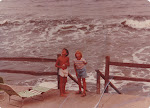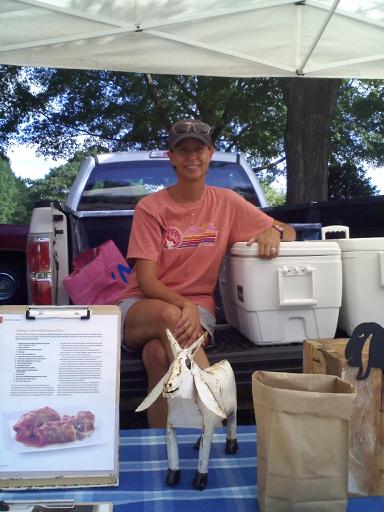You may have already seen this, but it's one more chapter in your book of how not particularly smart people get all the good jobs and money and how once exposed, their friends rush to say how nice they were and how nobody could have known any differently (and I actually used to admire the members of our small town synagogue's Hadassah for all their good works).
Ann Woolner in Bloomberg News whispers to us that "Madoff’s Lies Reveal It’s Not Easy Being Sleazy." Keep in mind that this guy ran the NASDAQ and that he was a very well-respected man before he was arrested. (Emphasis marks added - Ed.)Now, remember Hadassah? Sheesh! Turns out the main reason it all came crashing down was luv gone wrong? (Hmmm. Perhaps I should remarry in order to cheat and find a new love interest?) That didn't come out right. And am I catching a whiff here of Israeli lucratization? Larry Neumeister gives us the lowdown. (Emphasis marks added - Ed.)Aug. 14 (Bloomberg) -- Peering into Bernard Madoff’s investment advisory business, a government lawyer found it odd that he was trading different securities, and at different times, for clients. He was claiming the same strategy for all of them. So why so many variations among accounts?
For that and other reasons, Genevievette Walker-Lightfoot of the Securities and Exchange Commission became wary of Madoff in 2005, the Washington Post reported earlier this year. The funny part is that Madoff and his top sidekick, Frank DiPascali Jr., went to a lot of trouble to make it look like they were trading at various times for different clients specifically to allay suspicions. They thought it would make their make-believe trades look authentic, the SEC says in a complaint against DiPascali filed this week. Madoff’s secrets, sexual and financial, are seeping out these days. The same week that we learn a former chief financial officer of Hadassah, a Zionist women’s organization, claims she had an affair with him, the SEC makes public a 31-page complaint that shows the lengths to which Madoff and DiPascali went to hide the gigantic pyramid scheme they had built. “Every trade, every order ticket, every account statement, every confirmation and all other related records were fictitious,” the SEC says. DiPascali admitted his guilt to a host of criminal charges this week, joining Madoff who pleaded guilty in March. Offering a view of the scam from both sides now (apologies to Joni Mitchell), the document details bogus reports, the moving about of assets, the fake computer trades, the fake computer that hid their thievery. Hard to Figure Coming from the agency that should have busted them long ago, the unspoken message is that Madoff & Co. made it really, really hard to figure out what was going on. In covering its own failings, the SEC all but lauds Madoff for the creative ways he hid the truth. Hiding such a vast scam involving a regulated industry isn’t easy. It’s one thing to get a computer to churn out fake monthly statements to clients. But what about the trade blotters and order tickets? They couldn’t generate those with “credible execution times, counterparties or executing brokers,” the SEC points out. Not only that, but none of the securities they claimed to be trading would show up in the records of the Depository Trust Corp., the central securities depository for the U.S. And you have got to be ready in case an investor strolls in wanting to watch live trading. Plus, you need a unique investment strategy to explain your boffo results. Fooling Clients None of that is simple, whether it’s the SEC or clients you have to keep fooling. The easy task was the part that is the most difficult when the trading is real: beating the market. As anyone who has ever backdated a stock option knows, it’s a lot simpler to reap gains when you trade in hindsight. Looking backward, Madoff and DiPascali could see when stocks plummeted or peaked and timed their bogus trades accordingly. They invented something they called a “split- strike conversion” strategy to hedge their bets. That was a fiction, too. With billions of dollars in investor funds, they had to devise a way to make it look like the trades were individually made, at different times, or so they thought. So they used a random number generator program to create the appearance of trading at different intervals. As for the Depository Trust Corp. reports, DiPascali “and others” essentially counterfeited them, copying the layout, print font and even the paper type of the real thing, according to the SEC. Live Feed
A visitor to the Madoff firm was even shown the report at a computer terminal and told it was a live feed from the trust corporation, the SEC complaint says. One way they covered the fact that they had no counterparties in their options trades was to claim European financial institutions were handling them for U.S. investors, and U.S. dealers were doing the European trades. This was meant to discourage regulators and auditors from looking further, the SEC says. To limit exposure, Madoff hid the immense size of the investment advisory business from regulators. He revealed to authorities only 10 to 25 “special” accounts out of the thousands he oversaw. With a relative few accounts, generating fake documents was more manageable. None of that explains how the SEC could have missed the fraud. There were at least five times the SEC took a look into the Madoff operation, but no one came away with a view of what was really happening. Alerted by inconsistencies in various documents, Walker-Lightfoot reported her suspicions to higher-ups at the SEC, to no avail, the Post reported. However creative, however hard-working, however deceitful the Madoff-DiPascali team, it wasn’t only their work that kept the Ponzi going so long. It was the SEC’s failures at detection, even when told the operation looked amiss. (Ann Woolner is a Bloomberg News columnist. The opinions expressed are her own.) To contact the writer of this column: Ann Woolner in Atlanta at awoolner@bloomberg.net.
It's flying now. Suzan ________________________NEW YORK (AP) - A new book says that an investor who claims she was devastated by Bernard Madoff's multibillion-dollar Ponzi scheme had a two-decade affair with the disgraced financier.
The memoir, "Madoff's Other Secret: Love, Money, Bernie, and Me," was written by Sheryl Weinstein, whose relationship with Madoff spanned more than 20 years while both were married, said John Murphy, a spokesman for publisher St. Martin's Press. It goes on sale Aug. 25.
Madoff, 71, is serving 150 years in prison for defrauding investors. Weinstein says she met him at a business meeting when she was chief financial officer for the charitable women's organization Hadassah, where she had a role in investment decisions.
Madoff attorney Ira Sorkin said he hopes the author "was more discreet with her investment obligations than she has allegedly been with her sex life."
An attorney for Madoff's wife, Ruth Madoff, said his client did not know about the "alleged affair." The attorney, Peter Chavkin, said the allegations were a powerful reminder to those who claim Ruth Madoff knew about her husband's massive Ponzi scheme "that there are some things that some spouses - however close they are - do not share with each other."
At Bernard Madoff's June sentencing, Weinstein was among investors to urge a long prison sentence for the financier, who admitted ripping off thousands of investors for billions of dollars for at least two decades. She said she viewed meeting him 21 years ago "as perhaps the unluckiest day of my life."
Weinstein said her investment losses had forced her to sell her Manhattan home and devastated her, her husband of 37 years, her son, her parents, her in-laws and everyone who depended on them. She called Madoff "that terror, that monster, that horror, that beast ... an equal-opportunity destroyer."
In her correspondence with the court, Weinstein made no mention of the affair, though she did write in a request to speak at sentencing that she wanted to address Madoff and the court because "I think the personal connection may be more difficult for him to ignore."
Her husband, Ron Weinstein, said in a June letter to the court that all the money the couple had saved was lost by Madoff and that their marriage was strained.
"My wife has been a basket case," he said, "and we are both very depressed."
The book has drawn fresh attention to Hadassah, the Women's Zionist Organization of America.
The organization has said its principal investment with Madoff totaled about $33 million, while another $7 million had been entrusted to Madoff after it was donated by a French backer in 1988. Hadassah did not return a telephone call for comment Friday.
Stanley Epstein, a Santa Monica, Calif., lawyer married to a Hadassah member, said Hadassah's treasurer told him after Madoff's December arrest that the organization had cashed in between $120 million and $130 million from its Madoff accounts over the years. The profits could make the organization a target of those seeking to recover money to be distributed to defrauded investors.
By Friday evening, the publicity about Weinstein's book had pushed its presale ranking on Amazon.com from No. 4,408 eight hours earlier to No. 1,415.

























No comments:
Post a Comment